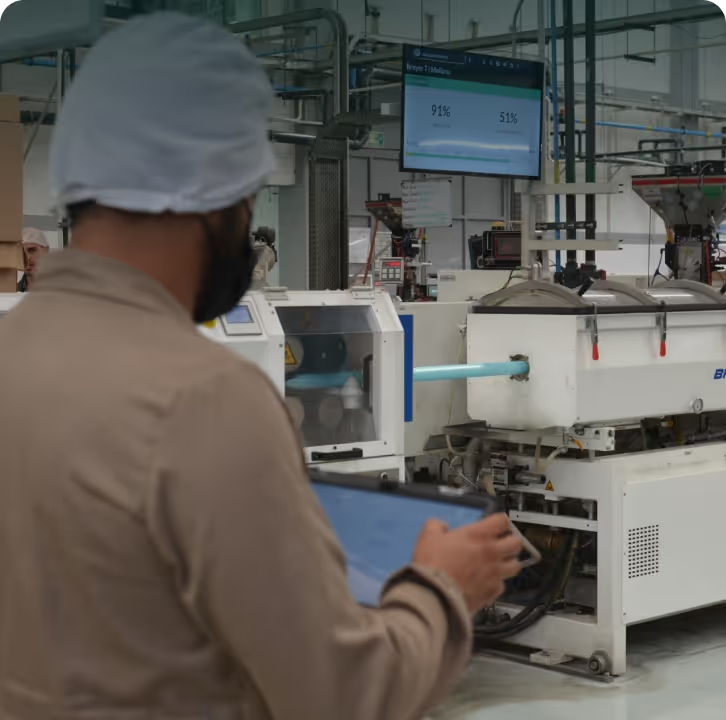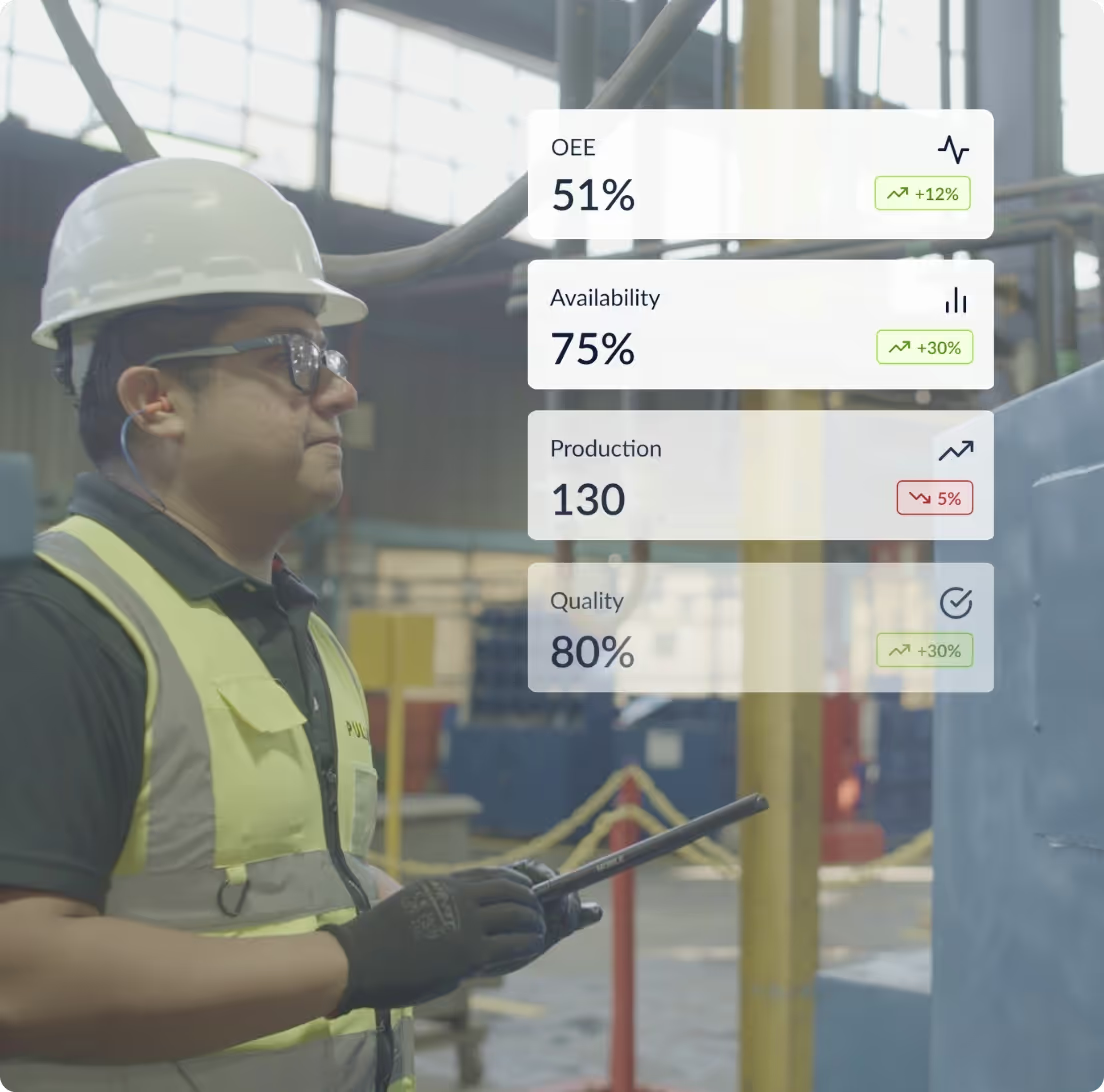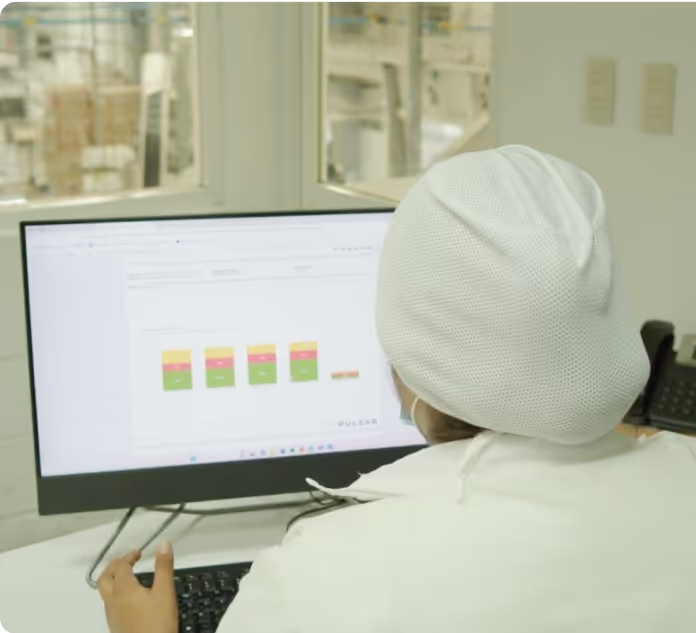
Drive Manufacturing Process Improvement with Pulsar’s Real-Time Monitoring
Manufacturing process improvement starts with having the right data, not just any data. Pulsar's real-time monitoring platform gives shop floor managers and leaders precise, reliable insights into what’s really happening on the shop floor. With accurate metrics directly from the machine, teams can identify inefficiencies, address issues at the source, and make confident decisions that drive continuous improvement and lasting process optimization. Learn more.


Real-time production metrics for continuous improvement

Leverage industrial sensors to gather data from your machines and automate your tracking.
With SMS and email alerts, you can react quickly to any unplanned event
Get insights on your KPIs, define priorities, and improve your processes with precise data
Manufacturing metrics for process improvement
Real-Time Machine Monitoring: Main Challenges
Digital transformation in manufacturing often fails before it even gets off the ground. Many plants start strong—with ambitious goals and flashy new systems—but stumble when the realities of the shop floor hit. Manufacturing operations are processes that weren’t built for digital tools: there’s legacy machines, limited connectivity, and fragmented processes that can increase the risk of integration projects. In other words, increasing visibility of the manufacturing processes isn’t just about installing software: it’s about rewiring the way people, machines, and data work together. That’s why it is called a transformation.
A common challenge of machine monitoring projects is assuming one solution can fit every machine and every process. In a typical manufacturing environment, you’ll find a mix of old and new equipment, each with its own quirks and communication protocols. Off-the-shelf monitoring systems often rely on PLC data or standard interfaces that many productive machines simply don’t have. The result: limited coverage, unreliable data, or a patchwork of solutions that don’t speak the same language. What many industrial plants require is adaptable, flexible technology—something that can capture meaningful data from any machine, regardless of age or brand—without significant downtime or invasive modifications.
Manual data logging is still the fallback for many plants, but it’s no match for the pace of modern production. Operators logging down run times or downtime reasons can only capture so much, and often after the fact. By the time data is reviewed, opportunities for quick improvement are already lost. Human error, incomplete notes, and inconsistent reporting all add up to a distorted picture of performance. Real-time machine monitoring solves that by automating the flow of data as it happens, giving teams the accuracy, speed, and visibility they need to act, not react.


Automated Machinery Monitoring
With automated machine monitoring solutions like Pulsar, manufacturers can focus on improving processes instead of chasing reports. Intuitive dashboards make it easy to visualize key performance metrics, identify trends, and address issues as they happen. By seeing what’s really going on in real time, teams can react faster to issues, make informed adjustments on the floor, and continuously refine their operations, spending less time compiling reports and more time driving production performance.
Types of Machine Monitoring Solutions
ERP Systems
Provide high-level visibility of operations, integrating production data with inventory, finance, and supply chain management. Typically, they offer limited real-time machine insight out of the box and require manual input.
MES (Manufacturing Execution Systems)
Bridge the gap between the shop floor and business systems, tracking production orders, performance, and quality to improve workflow and traceability. Many of these solutions require PLC connection, and have complex and expensive implementations that can last for months or years.
SCADA (Supervisory Control and Data Acquisition)
Focus on real-time control and monitoring of equipment and processes, often used in large-scale industrial environments. They require modern IT infrastructure, technical support and maintenance, and top-of-the-line equipment.
IIoT (Industrial Internet of Things) Platforms
Collect and analyze data from sensors and connected machines to enable predictive insights, automation, and advanced analytics across the plant. As well as MES and ERP systems, they often require a lot of investment upfront.
Standalone Machine Monitoring Systems
Lightweight, flexible solutions (like Pulsar) that are designed for capturing live machine data. It’s an ideal solution for plants with different machine types that need fast deployment and results without replacing their current setup, at an affordable pricing model.

Data for manufacturing process improvement in real-time
With our monitoring platform, managers, supervisors, and leaders can automatically track production KPIs—such as OEE, utilization, performance, and downtime—using the latest technology.
The Importance of Real-Time Production Visibility
In modern manufacturing, decisions can’t wait for end-of-shift reports or manual data entry. Real-time visibility gives teams immediate insight into what’s happening across machines, lines, and shifts, so they can react as soon as an issue arises. With up-to-the-minute data, manufacturers gain the clarity to prioritize the right actions to meet their production goals, improve communication on the shop floor, and close the gap between planning and execution.
Some of the key benefits of real-time production include:
Making the most out of the current machine setup: By tracking performance and downtime, teams can uncover inefficiencies stemming from process issues and reduce waste or improve setups that maybe slowing down production. This type of insight can boost output without requiring investment in new equipment.
Reducing the impact of issues and events: Allowing teams to detect downtime, slow cycles, or quality deviations the moment they occur and react as soon as possible has a massive impact on day-to-day productivity. The faster you can mitigate a production issue, the less damage it causes.
More clarity on what’s important: By having data-driven performance tracking, managers and manufacturing leaders understand what their critical processes are, what requires more attention, and how to keep improving to become more efficient.
Better alignment towards production goals: Everyone from production to maintenance sees the same live information, fostering accountability and collaboration. This also helps leverage all available skills and resources to drive business growth.
Real-time visibility is a competitive edge. It empowers manufacturers to optimize capacity, improve delivery performance, and adapt faster to customer demand or supply chain shifts. By connecting machines, systems, and people through digital platforms, companies transform raw data into actionable insight, establishing a foundation for continuous improvement and smarter operations.

How we benefit our clients
Results achieved by our clients using our real-time monitoring platform.
















Digitize your operations and drive growth with Pulsar

Enable real-time monitoring for any machine—regardless of type, model, or age, without interfering PLCs.

We collect data automatically and make it accessible to your team from a single, intuitive platform.

Our platform can be installed in a single visit, requires minimal setup, and includes training and permanent technical support.

Request a custom demo
Discover how our monitoring platform can help you improve your manufacturing processes across your processes.




